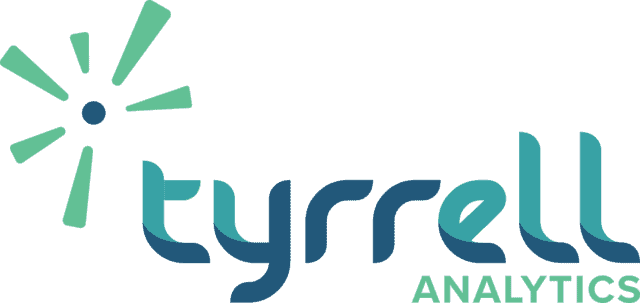The world of business is becoming increasingly data-driven, with organizations of all sizes relying on data to inform their decision-making and drive their strategies. However, this transition towards a data-driven approach brings its own set of business challenges. White papers are authoritative reports or guides that provide information on a particular topic or issue. They are typically used to educate readers about a complex topic or technology, and to present a solution or recommendation for a specific problem.
Companies, organizations, or government agencies write white papers to provide information on products, services, policies, or regulations. They often use white papers as a marketing tool to showcase their expertise and promote their products or services. In this article, we will delve deeper into the concept of data strategy and explain its significance in creating an analytics culture within an organization. We aim to provide a comprehensive understanding of how organizations can effectively leverage data to drive informed decision-making and achieve business success by covering these aspects.

Whitepaper typically include research data, case studies, and other forms of evidence to support the arguments made in the paper. White papers are typically written in a formal, academic style, and are intended to be read by an educated audience. They are often used in industries such as technology, finance, and healthcare, where complex information needs to be communicated clearly and effectively. White papers are sales and marketing documents that are designed to encourage or persuade potential clients to learn more about a particular product, service, technology, or strategy.
For business-to-business (B2B) marketing reasons between a manufacturer and a wholesaler or between a wholesaler and a retailer, white papers are often developed. It can offer a comprehensive report or how-to about a particular item or subject and aims to help its audience. However, this reliance on data also comes with a range of business challenges.
Data security and privacy: One of the biggest challenges in data business is ensuring the security and privacy of sensitive information. Whitepapers can help organizations to develop strategies for securing their data, including implementing encryption, access controls, and auditing processes.
Data quality: Another major challenge in data business is ensuring the quality and accuracy of data. Whitepapers can help organizations to develop best practices for data cleaning, normalization, and validation, as well as strategies for dealing with missing or incomplete data.
Data integration: Many organizations struggle to integrate data from different sources, such as disparate databases or third-party data providers. Whitepapers can help organizations to develop strategies for data integration, including the use of APIs, data warehouses, and other tools.
Data governance: Data governance is the process of managing the availability, usability, integrity, and security of data used in an organization. Whitepapers can help organizations to develop effective data governance policies, including processes for data classification, data lineage, and data retention.
Data analysis: Finally, many organizations struggle to derive meaningful insights from their data. Whitepapers can provide guidance on data analysis techniques, including data visualization, statistical analysis, and machine learning.
Whitepapers can be a valuable tool for organizations seeking to address the challenges of data business. By providing guidance on data security, quality, integration, governance, and analysis, whitepapers can help organizations to make better use of their data and gain a competitive advantage in their respective industries.
Purpose Of Whitepapers And How Do Readers Want To Solve Issues?
The information provided in white papers is frequently supported by research and statistics from reputable sources and may include graphs, tables, charts, and other data visualization techniques. A white paper can explain an organization’s ideology or demonstrate industry-related research findings.
The general public or several companies looking for answers to their problems or requirements can be the target audience for a white paper. Unlike when you draft a suggestion report for a client, you often won’t know your audience well. In spite of this, you must concentrate on your audience’s needs in order to persuade them. Readers will look to your white paper for a solution if you can address the issues they wish to solve. If you don’t, people might not read your white paper.
How Can Whitepaper Data Benefit Business Challenges?

Establishing credibility: When a business publishes a white paper, it demonstrates its expertise on a particular subject. By presenting research, data, and analysis, a white paper can help establish the business as a thought leader in its industry.
Generating leads: White papers can be used as a lead generation tool. By offering valuable information on a topic that is relevant to potential customers, businesses can attract leads who are interested in their products or services.
Educating customers: White papers can help educate customers about a product or service. By presenting information in a clear and concise manner, businesses can help customers make informed purchasing decisions.
Building trust: By providing data and analysis, white papers can help build trust with customers. When customers see that a business is transparent and provides valuable information, they are more likely to trust the business and its products or services.
Supporting sales: White papers can be used to support the sales process. By providing salespeople with detailed information about a product or service, they can better answer customer questions and overcome objections.
Monitoring Buildings Using Whitepaper
Building monitoring is a critical aspect of facility management, as it helps to ensure the safety, comfort, and efficiency of building occupants. Whitepapers can provide valuable insights into building monitoring technologies, strategies, and best practices.
HVAC Systems: Heating, ventilation, and air conditioning (HVAC) systems are a key component of building monitoring. Whitepapers can provide guidance on how to monitor and optimize HVAC systems, including temperature control, humidity control, air quality monitoring, and energy efficiency.
Lighting Systems: Lighting systems also play a crucial role in building monitoring. Whitepapers can provide insights into how to monitor and control lighting systems, including energy-efficient lighting, daylight harvesting, and occupancy sensors.
Energy Management: Effective energy management is critical for building monitoring, as it can help to reduce energy consumption and costs. Whitepapers can provide guidance on developing an energy management plans, including setting energy goals, monitoring energy use, and implementing energy-saving strategies.
Security and Safety: Building monitoring also includes ensuring the safety and security of building occupants. Whitepapers can provide insights into security and safety monitoring, including access control, video surveillance, and fire detection and prevention.
Building Automation Systems: Building automation systems (BAS) are a key technology for building monitoring. Whitepapers can provide guidance on how to implement and optimize BAS, including integrating different building systems, optimizing energy use, and monitoring system performance.
By leveraging the latest technologies and best practices, building managers can ensure the safety, comfort, and efficiency of building occupants, while reducing energy consumption and costs.
Energy Consumption Using Whitepaper

Energy consumption is a critical issue that affects both the environment and the economy. Businesses, governments, and individuals all have a role to play in reducing energy consumption and promoting sustainable practices. Whitepapers can be a useful tool for addressing energy consumption challenges and identifying opportunities for improvement.
One of the primary ways to reduce energy consumption is to improve energy efficiency. Whitepapers can provide guidance on best practices for energy-efficient building design, HVAC systems, lighting, and appliances. They can also provide insights into the latest technologies and innovations in energy-efficient products and services.
Effective energy management is crucial for reducing energy consumption and costs. Whitepapers can provide guidance on developing an energy management plan, including setting energy goals, monitoring energy use, and implementing energy-saving strategies. They can also provide insights into the latest energy management tools and technologies.
Reducing energy consumption also requires changes in behavior and attitudes. Whitepapers can provide guidance on promoting energy-efficient behaviors, such as turning off lights when not in use, reducing energy consumption during peak hours, and choosing energy-efficient appliances and products.
Whitepapers can be a valuable tool for addressing energy consumption challenges and identifying opportunities for improvement. By providing guidance on energy efficiency, energy management, and behavioral change, whitepapers can help businesses, governments, and individuals to reduce energy consumption and promote sustainable practices.
Data Analytics To Improve Decision-Making
Data Analytics is a vital component of business decision-making, providing insights into customer behavior, market trends, and operational performance. Whitepapers can provide valuable insights into analytics strategies, tools, and best practices, helping organizations to improve their analytics capabilities and drive better business outcomes. One of the primary challenges in analytics is ensuring data quality. Whitepapers can provide guidance on how to ensure data accuracy, completeness, and consistency, including data cleaning, normalization, and validation.
Another challenge in analytics is integrating data from disparate sources. Whitepapers can provide insights into how to integrate data from multiple sources, including data warehouses, APIs, and other tools. Data visualization is a critical component of analytics, as it allows for the effective communication of complex data insights. Whitepapers can provide guidance on best practices for data visualization, including the use of charts, graphs, and dashboards.
Predictive analytics is an advanced form of analytics that uses statistical models and machine learning algorithms to forecast future trends and behaviors. Whitepapers can provide insights into how to leverage predictive analytics for business decision-making, including the use of predictive models, data mining, and machine learning.
Analytics is not just a technology or a set of tools, but a culture that values data-driven decision-making. A strong data strategy is essential for organizations to harness the power of analytics effectively. Whitepapers can provide valuable insights into how to create an analytics culture within an organization, emphasizing the importance of data literacy, stakeholder engagement, change management, and the development of a robust data strategy.
A well-defined data strategy outlines the organization’s approach to collecting, managing, analyzing, and leveraging data to drive business outcomes. It helps align data initiatives with business objectives, identifies the necessary data governance frameworks, and establishes clear guidelines for data quality, security, and privacy.
A comprehensive data strategy ensures that the organization has the right infrastructure, processes, and skills to maximize the value of its data assets. By incorporating data strategy into the broader analytics culture, organizations can foster a data-driven mindset and enable data-driven decision-making at all levels.
By leveraging the latest analytics strategies, tools, and best practices, organizations can make better use of their data and drive better business outcomes.
Business Challenges and Compliance
Compliance is an important aspect of business operations, ensuring that organizations adhere to legal and regulatory requirements, as well as internal policies and standards. Whitepapers can provide valuable insights into compliance strategies, tools, and best practices, helping organizations to navigate complex compliance landscapes and mitigate risks. Whitepapers can give guidance on the latest regulatory requirements, including regulations related to data privacy, cyber security, and environmental protection.
Whitepapers can provide guidance on developing and implementing effective policies and standards, including codes of conduct, anti-bribery policies, and information security policies. Compliance is also about managing risks and mitigating potential liabilities. Whitepapers insights into risk management strategies, including risk assessments, risk mitigation plans, and incident response plans. Effective compliance requires the participation and support of all employees.
Technology can be a valuable tool for compliance, helping organizations to manage compliance requirements more efficiently and effectively. By leveraging the latest compliance strategies, tools, and best practices, organizations can mitigate risks, reduce liabilities, and ensure compliance with legal and regulatory requirements.

